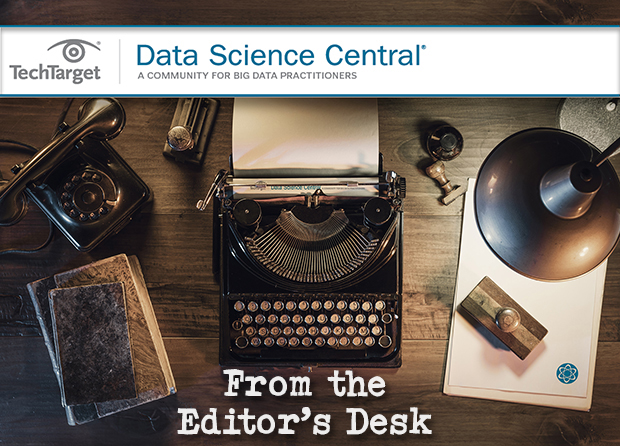We here at Data Science Central (DSC) rely upon you, our readers, for our content, which means typically that we have very little control over what stories actually come in. Surprisingly, perhaps, we do periodically get posts that all seem to cluster in a theme. This actually shouldn’t be all that unusual – with an audience of forward-looking thinkers and writers all looking for the next big thing (NBT), it should be no surprise that the next big thing tends to come clustered.
One big thing that showed up this week was Robotic Process Automation, also known in TLA (three-letter acronym) circles as RPA. The name is a little misleading: The robotic in this case refers to software agents that can be trained, via machine learning algorithms, to do specific tasks repetitively. Unlike with traditional software, the robots aren’t programmed to do a certain task – they are built in order to learn new actions by seeing them repeated then to emulate those actions once it has enough data points. The product of one such software robot can then be handed off as the input to another robot, and from there can be chained together in a process pipeline.
Pipelining has of course been around for as long as computers have, but what makes RPAs so interesting is that what they imply – namely, we are now reaching a point where more and more the components of those pipelines involve learned (and potential reinforced) behaviors by the software itself. In effect, such pipelines become much more organic and powerful, since they can in fact change in response to changing conditions, and hence are far less brittle.

They can also work with physical robotic systems, even those like the new inhabitants of Mars – Perseverance and its small helicopter support drone Ingenuity. When Perseverance landed flawlessly on the Red Planet this last week, it was Perseverance, first as a spacecraft, then as a rover, that handled its insertion. It takes light three minutes to get from Earth to Mars and back, far too long a lag time to support long-distance control. What this means is that increasingly Mission Control is telling its rovers and spacecraft what to do, while letting the drone figure out how to do it. This is a signal achievement and one that the data science community has had a great deal to do with.
This is why we run Data Science Central, and why we are expanding its focus to consider the width and breadth of digital transformation in our society. Data Science Central is your community. It is a chance to learn from other practitioners, and a chance to communicate what you know to the data science community overall. I encourage you to submit original articles and to make your name known to the people that are going to be hiring in the coming year. As always let us know what you think.
In media res,
Kurt Cagle
Community Editor,
Data Science Central



